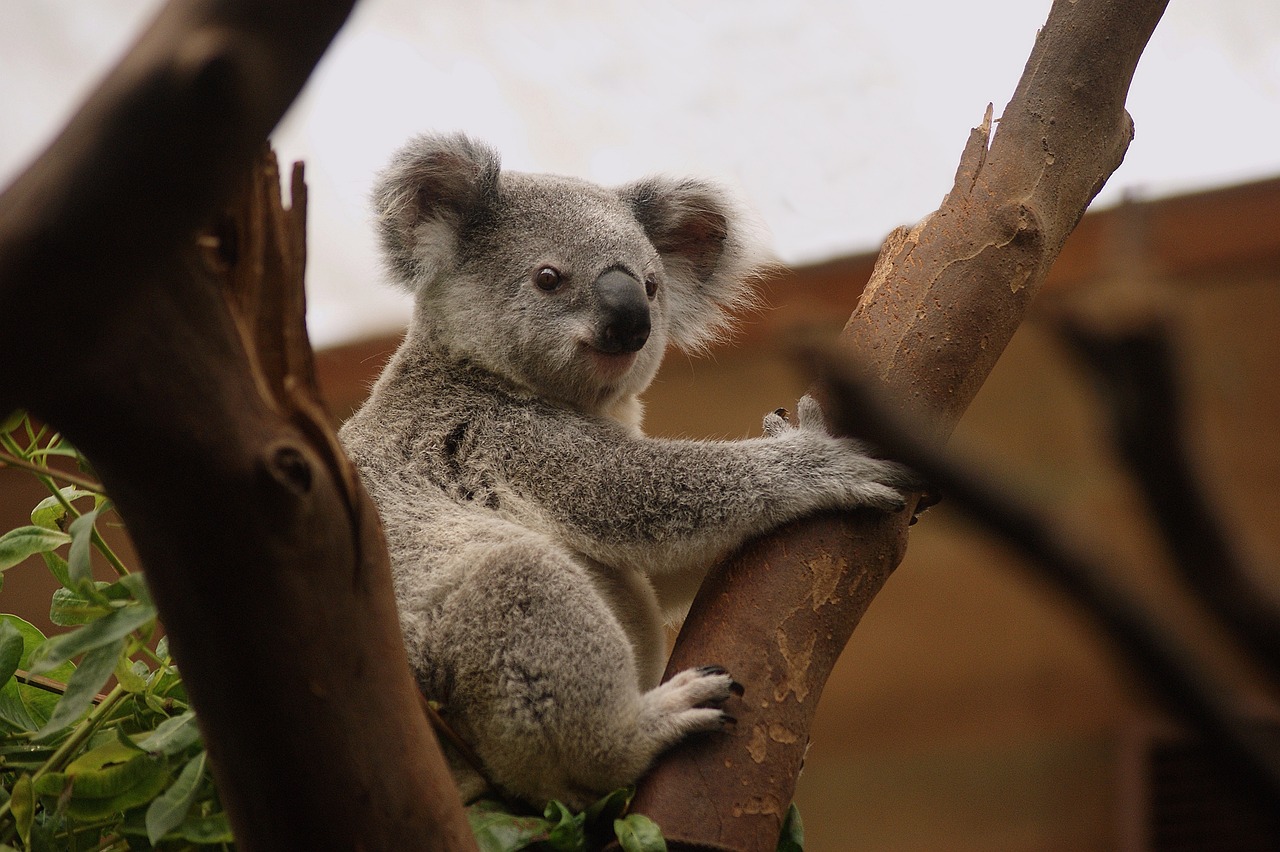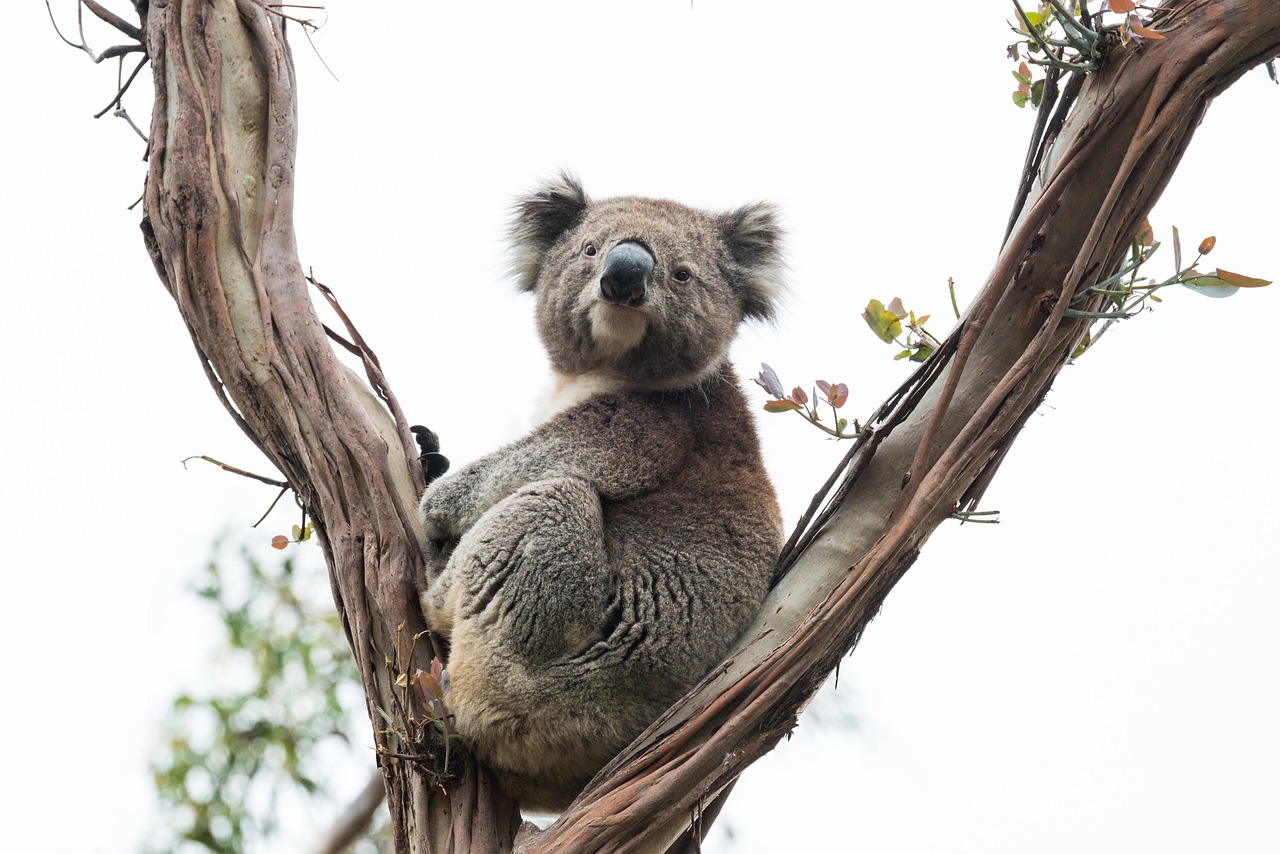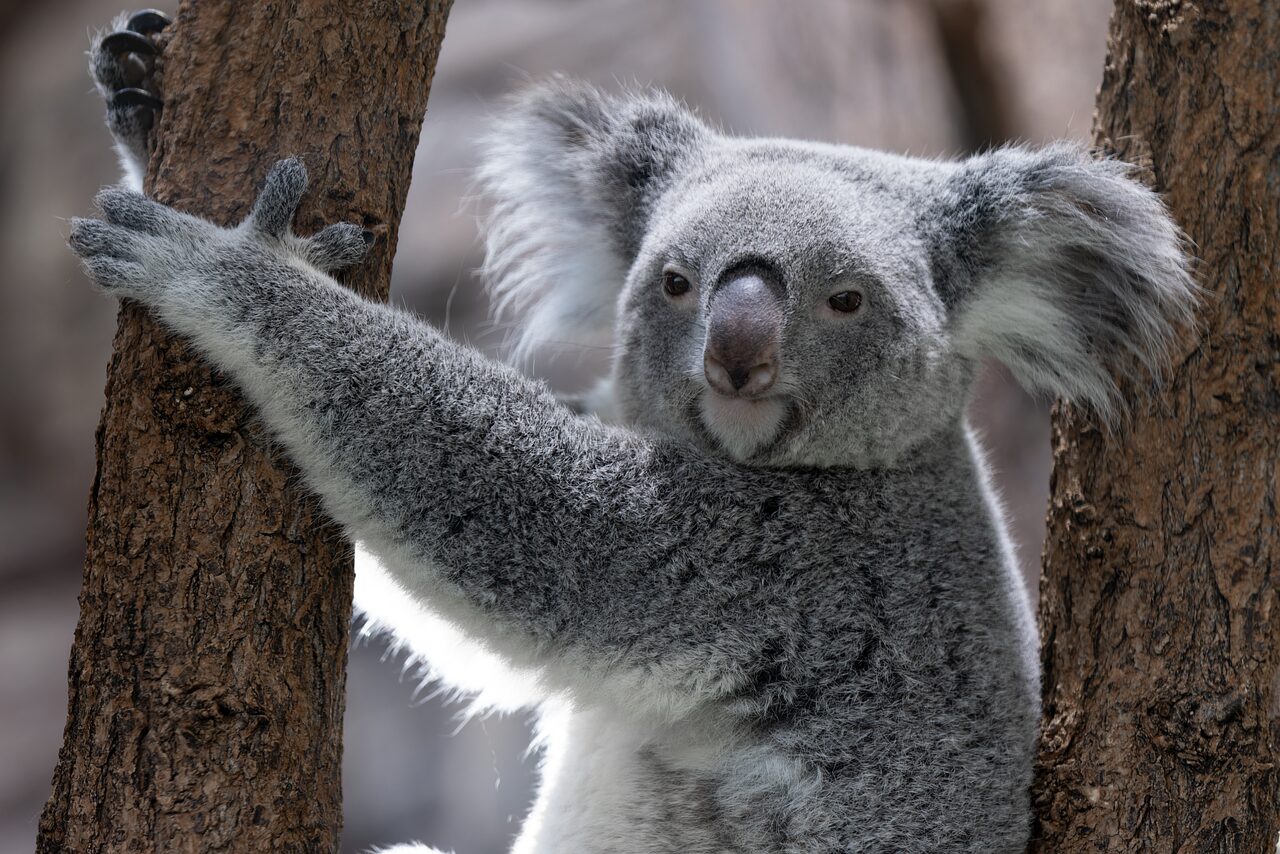Eucalyptus trees exhibit a rapid growth rate, typically ranging from 3 to 10 feet per year in warm climates, while in temperate zones, their growth rate may vary from 2 to 8 feet annually. This variation is influenced by factors such as soil quality, water availability, and overall climate conditions.
Eucalyptus trees are native to Australia but have become popular worldwide due to their fast growth and adaptability. These trees thrive in various environments, particularly in warm and temperate zones. Their unique characteristics make them a favorable choice for landscaping, timber production, and even as a source of essential oils.

The growth rate of eucalyptus trees can significantly enhance their appeal for various uses. Their rapid development allows for quick reforestation and effective land use in agricultural settings. Understanding how these trees grow in different climates can help landowners and gardeners make informed decisions about planting and maintenance.
Growth Characteristics of Eucalyptus Trees
Eucalyptus species exhibit diverse growth rates based on their genetic makeup as well as environmental conditions. Here are some key factors that influence their growth:
- Species Variation: Different eucalyptus species have unique growth habits. For example, Eucalyptus globulus (Blue Gum) is known for its fast growth, while Eucalyptus camaldulensis (River Red Gum) grows at a moderate rate.
- Climate Conditions: Warm climates with ample sunlight and rainfall support faster growth. In contrast, cooler temperate zones may slow down the growth rate.
- Soil Quality: Well-drained soils rich in nutrients promote better growth. Poor soil quality can hinder the tree’s overall development.
- Water Availability: Regular watering is vital, especially during dry spells. Eucalyptus trees require sufficient moisture to sustain their rapid growth.
In addition to these factors, the age of the tree also plays a crucial role. Young eucalyptus trees tend to grow faster than older ones. Initial growth spurts are common, which eventually stabilize as the tree matures.

Growth Rates in Different Zones
The growth rates of eucalyptus trees can differ significantly between warm and temperate zones. Below is a comparison of their growth characteristics in these two climates:
| Zone | Average Growth Rate (Feet per Year) | Optimal Conditions |
|---|---|---|
| Warm Zones | 3 to 10 | Full sun, consistent rainfall, well-drained soil |
| Temperate Zones | 2 to 8 | Partial sun, moderate rainfall, well-drained soil |
In warm zones, eucalyptus trees achieve their maximum potential due to the favorable growing conditions. They flourish in regions with long growing seasons and minimal frost. Conversely, in temperate zones, the growth rate may be slower because of shorter growing seasons and cooler temperatures.
The adaptability of eucalyptus trees is another remarkable feature. Some species can withstand drought conditions while others thrive in wetter environments. This versatility allows eucalyptus to be planted in a wide range of locations, making them suitable for various landscapes.

When planting eucalyptus trees, it is essential to consider local climatic conditions and select the appropriate species for the zone. Proper planning will enhance their growth potential and health over time. Regular maintenance, including pruning and pest management, also contributes to their robust growth.
Overall, eucalyptus trees present an impressive growth rate that varies by species and environmental factors. Understanding these dynamics can help maximize their benefits in both home gardens and commercial forestry.
Factors Influencing Eucalyptus Growth Rates
The growth rates of eucalyptus trees are influenced by several key factors. Understanding these can help in optimizing their growth and ensuring they thrive in both warm and temperate zones. Below are the primary factors affecting eucalyptus growth:

Soil Quality
Soil plays a critical role in the growth of eucalyptus trees. The characteristics of the soil can directly influence nutrient availability and root development. Here are some soil-related aspects to consider:
- Nutrient-Rich Soil: Eucalyptus trees prefer soils that are rich in organic matter. This promotes healthy growth and robust root systems.
- pH Levels: Eucalyptus typically thrives in slightly acidic to neutral soil (pH 6 to 7). Testing soil pH can guide amendments.
- Drainage: Well-drained soils are essential. Waterlogged conditions can lead to root rot and hinder growth.
Water Availability
Water is vital for the growth of eucalyptus trees. The amount and consistency of rainfall can significantly impact their growth rates. Key points include:
- Rainfall Patterns: Regions with regular rainfall support faster growth, while those experiencing drought may see stunted development.
- Irrigation Needs: In areas with insufficient rainfall, supplemental irrigation may be necessary to ensure healthy growth.
- Drought Resistance: Some eucalyptus species have adapted to withstand periods of drought, but they still benefit from consistent moisture during critical growth phases.
Sunlight Exposure
Sunlight is another crucial element for the growth of eucalyptus trees. These trees generally prefer full sun exposure for optimal growth. Factors related to sunlight include:
- Full Sun Conditions: Eucalyptus trees grow best when they receive at least 6 to 8 hours of direct sunlight daily.
- Shade Tolerance: While some species can tolerate partial shade, most will exhibit slower growth rates in shaded conditions.
Pest and Disease Management
Pests and diseases can pose significant threats to eucalyptus trees, affecting their overall health and growth rates. Proper management strategies are essential for maintaining healthy trees. Here are common issues and solutions:
- Pests: Common pests include eucalyptus borer beetles and leaf-eating caterpillars. Monitoring and controlling these pests can prevent damage.
- Diseases: Fungal infections, such as root rot and leaf spot, can occur. Regular inspections and maintaining good air circulation around trees can help mitigate these risks.
- Integrated Pest Management (IPM): Implementing IPM strategies can effectively manage pests while minimizing chemical use.
Growth Patterns of Different Eucalyptus Species
Different species of eucalyptus exhibit unique growth patterns and rates. Understanding these differences is essential when selecting a species for planting. Below is a brief overview of a few notable species:
| Species | Common Name | Growth Rate (Feet per Year) | Ideal Climate |
|---|---|---|---|
| Eucalyptus globulus | Blue Gum | 3 to 10 | Warm, coastal regions |
| Eucalyptus camaldulensis | River Red Gum | 2 to 8 | Tropical to subtropical regions |
| Eucalyptus citriodora | Lemon-scented Gum | 3 to 6 | Warm, well-drained areas |
| Eucalyptus tereticornis | Corymbia | 3 to 10 | Tropical climates |
The selection of eucalyptus species should be based on the specific environmental conditions of the planting area. Each species has its own requirements and resilience levels, which can affect the overall success of the planting effort.
Moreover, understanding the growth patterns of different species can aid in strategic planning for land use, timber production, and landscaping projects. Careful consideration of these factors will contribute to the successful cultivation of eucalyptus trees in various climates.
Ecological Benefits of Eucalyptus Trees
Eucalyptus trees are not only valued for their rapid growth and timber production, but they also offer numerous ecological benefits. Understanding these advantages can help promote the planting of eucalyptus in appropriate areas while balancing environmental concerns.
Carbon Sequestration
One of the most significant ecological benefits of eucalyptus trees is their ability to sequester carbon. Here are key points regarding this process:
- Fast Growth: Eucalyptus trees grow quickly, allowing them to absorb more carbon dioxide from the atmosphere in a shorter time frame.
- Long Lifespan: As these trees mature, they continue to store carbon, contributing to long-term carbon sequestration.
- Mitigating Climate Change: By effectively capturing carbon, eucalyptus plantations can play a role in reducing greenhouse gas emissions and combating climate change.
Biodiversity Support
Eucalyptus trees can provide habitats for various species, contributing to local biodiversity. Some important aspects include:
- Habitat Creation: Eucalyptus forests can serve as homes for numerous birds, insects, and other wildlife.
- Food Sources: The leaves of eucalyptus are a primary food source for koalas and other herbivores, supporting local ecosystems.
- Diversity of Plant Life: Eucalyptus groves often support a variety of understory plants that thrive in their shade and contribute to overall ecological health.
Potential Challenges of Eucalyptus Cultivation
While eucalyptus trees offer many benefits, there are challenges associated with their cultivation that must be addressed to ensure sustainable practices. Here are some potential issues:
Water Consumption
Eucalyptus trees are known for their high water uptake, which can lead to competition with other vegetation and local water sources. Key considerations include:
- High Transpiration Rates: Eucalyptus trees transpire large amounts of water, which may deplete groundwater resources, especially in arid regions.
- Impact on Local Flora: Surrounding plants may struggle to compete for water, potentially leading to a decline in native plant populations.
Pest and Disease Issues
As with any tree species, eucalyptus is susceptible to various pests and diseases that can threaten their health and growth. Some common issues include:
- Pests: Invasive species such as the eucalyptus beetle can cause significant damage to eucalyptus foliage.
- Diseases: Fungal infections like root rot and leaf blight can adversely affect tree health, leading to reduced growth rates and increased mortality.
Best Practices for Eucalyptus Management
<pTo maximize the benefits of eucalyptus trees while minimizing potential challenges, several best practices should be implemented during cultivation:
Site Selection
Choosing the right site for eucalyptus planting is crucial. Considerations include:
- Soil Quality: Test soil for nutrients and pH levels, ensuring it meets the needs of the selected eucalyptus species.
- Water Availability: Assess local water resources to avoid planting in areas prone to drought or water scarcity.
Irrigation Management
Effective irrigation practices can help manage water consumption and ensure healthy tree growth. Strategies may involve:
- Drip Irrigation: Utilizing drip irrigation systems can provide targeted watering while conserving water resources.
- Drought-Resistant Species: Selecting species that are more tolerant of dry conditions can help reduce overall water consumption.
Pest and Disease Monitoring
Regularly monitoring for pests and diseases is essential for maintaining healthy eucalyptus trees. Recommended practices include:
- Visual Inspections: Conduct routine checks on trees for signs of pest damage or disease symptoms.
- Pest Control Measures: Implement integrated pest management (IPM) strategies to control pest populations while minimizing chemical use.
By adopting these best practices, landowners and gardeners can cultivate eucalyptus trees sustainably while reaping the ecological benefits they provide. These efforts contribute positively to both environmental health and local economies through timber production and habitat restoration.
Additional Considerations for Eucalyptus Growth
Beyond the fundamental aspects of soil, water, and pest management, there are several additional considerations that can enhance the growth rate and health of eucalyptus trees in both warm and temperate zones. These factors include climate adaptation, fertilization practices, and community engagement.
Climate Adaptation Strategies
As climate change continues to impact weather patterns globally, it is critical for eucalyptus cultivators to adopt strategies that enhance the trees’ resilience. Some strategies include:
- Species Selection: Choose eucalyptus species that are well-adapted to local climate conditions. For example, some species may be more tolerant to increased temperatures or variable rainfall patterns.
- Microclimate Management: Planting eucalyptus in areas that provide natural shade or wind protection can create favorable microclimates that support growth.
- Climate Monitoring: Regularly monitor local climate trends to adjust management practices accordingly, ensuring trees receive optimal care throughout their life cycle.
Fertilization Practices
Proper fertilization can significantly impact the growth rate of eucalyptus trees. Here are some effective practices:
- Nutrient Testing: Conduct soil tests to determine nutrient levels and deficiencies. This information will guide appropriate fertilizer application.
- Organic Fertilizers: Using organic fertilizers can improve soil health over time, promoting better tree growth while minimizing chemical runoff.
- Timing of Application: Apply fertilizers during the early growing season to stimulate new growth and development.
Community Engagement and Education
Engaging the community about eucalyptus cultivation can lead to broader support and understanding of its benefits. Key points include:
- Workshops and Seminars: Organize educational sessions for local landowners to share best practices for growing and managing eucalyptus trees.
- Collaboration with Local Organizations: Partner with environmental organizations to promote sustainable eucalyptus planting and maintenance.
- Acknowledging Local Knowledge: Encourage the sharing of traditional knowledge about land management practices that may benefit eucalyptus growth.
Final Thoughts
The growth rate of eucalyptus trees in warm and temperate zones presents numerous opportunities for landowners and communities. With their fast growth, adaptability, and ecological benefits, eucalyptus trees can contribute significantly to reforestation efforts, timber production, and habitat restoration.
However, it is essential to approach eucalyptus cultivation with a comprehensive understanding of the environmental impacts and management practices required. By focusing on soil quality, water management, pest control, and community engagement, cultivators can enhance their success while minimizing potential challenges.
As climate dynamics continue to evolve, adopting adaptive strategies will be crucial for the sustainable growth of eucalyptus trees. By considering all aspects of cultivation—from species selection to community involvement—landowners can foster healthier ecosystems while reaping the economic benefits that eucalyptus plantations provide.
In summary, eucalyptus trees hold significant potential for contributing to environmental health and economic vitality. Their strategic cultivation, rooted in sound practices and community collaboration, can create thriving landscapes beneficial for current and future generations.
